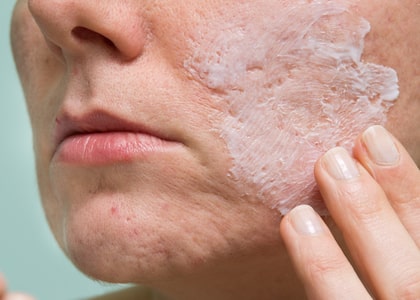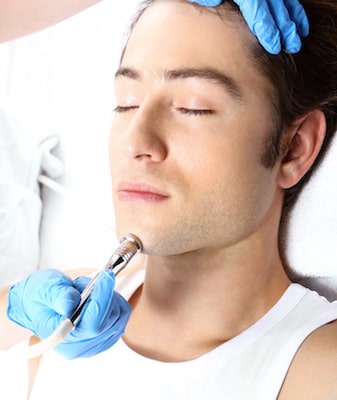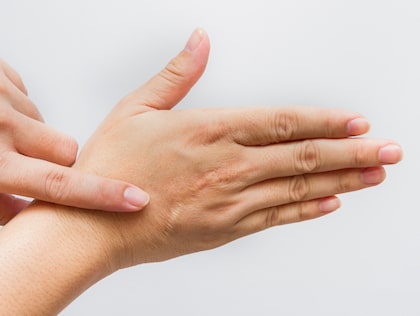The appearance of scars on the body is quite common after an accident. Some of the scars might fade on their own while others might be permanent additions to the appearance of a person. While the appearance of a scar is normally not a reason for a person to be concerned, there are many people that want to lessen the appearance of them.
Here are some of the most effective, and popular, scar treatment options to reduce or eliminate the appearance of scars:
Scar Treatment Techniques to Try at Home
 The use of home remedies for scars can help to reduce the appearance of the scars located on the body. In general, home remedies are ideal for treating new scars or scars that are relatively minor in their appearance. If a scar on the body is older, or considered to be extensive in its appearance, it is best to visit a doctor to discuss medical cosmetic treatment options instead of home remedies.
The use of home remedies for scars can help to reduce the appearance of the scars located on the body. In general, home remedies are ideal for treating new scars or scars that are relatively minor in their appearance. If a scar on the body is older, or considered to be extensive in its appearance, it is best to visit a doctor to discuss medical cosmetic treatment options instead of home remedies.
- It is important to start treating a scar as soon as possible to achieve the best results in reducing its appearance. Patients should keep the scar clean by washing it daily with water and a mild soap. Petroleum jelly can be applied to the wound to keep it moist and stop scabs from forming. A wound can be covered with a bandage or, if the wound is larger, a silicone gel sheet.
- Once the wound has healed, a regular regimen of exfoliation can help to remove any dead skin cells so the wound can enjoy a faster recovery time. Patients can exfoliate the area that surrounds the scar and then apply natural oil or moisturizer after the exfoliation is completed.
- A gentle massage with oils on the area around the scar can help to reduce the amount of collagen that builds up in the targeted area and flatten the scar. Patients are advised to massage the skin three or four times each day for 5 minutes at a time. One of the most popular natural oils for treating scars is coconut oil. Studies have shown that coconut oil can encourage the healing of skin tissue.
- Aloe Vera gel has been shown to improve wound healing in patients. While Aloe Vera gel might not improve the appearance of scars, it can hydrate the skin to reduce the amount of tightness in the scar.
- Sunscreen will not get rid of scars but it can help them to fade and also reduce the amount of skin discoloration.
- OTC medicated gels and creams are able to improve the level of wound healing as well as reduce the appearance of scars.
Scar Reduction – Medical and Cosmetic Treatments
 Older scars that tend to be more visible might only respond to medical or cosmetic treatments of the scars. Here are some examples of the most effective medical and cosmetic scar treatments:
Older scars that tend to be more visible might only respond to medical or cosmetic treatments of the scars. Here are some examples of the most effective medical and cosmetic scar treatments:
- Dermal fillers can be injected into the area where the scar is located. The fillers work to plump us the area where the skin is indented to make the scar less noticeable to others.
- Chemical peels are placed on the skin to remove its top layers and reduce scars that range from moderate to severe.
- Botox injections reduce the visibility of the scar and smooth out the skin.
- Cryotherapy is when a doctor uses liquid nitrogen to freeze the scars in order to flatten and reduce their overall growth
- Corticosteroid shots work to flatten out scars that are raised as well as reduce the size of the scar.
- Microneedling is when a small pen or roller is used to poke small holes in the top layer of the skin where the scar is located. The small pen or roller contains hundreds of tiny needles. The punctures from the holes encourage the production of collagen in the body to reduce the appearance of scars.
- Laser therapy is when a focused beam of light is used to treat scars that are classified as severe. The laser light removes the outer layer of the skin or it stimulates the production of new skin cells to replace the damaged skin cells.
- People that have a scar that is very tight can have scar reduction surgery to lessen the scar and also reduce any restrictions in the movement of the body where the scar is located.
Choosing how to Treat Scars
Patients should be aware that different types of scars can require different treatment options. It is important to consult with an experienced doctor about the best treatment option for a scar. Scars from a sports accident or mishap at home will need to be addressed differently than a scar that is the result of a burn.
The final result of any type of scar treatment varies depending on the age, depth and type of scar. While the scar treatment might not be able to completely reduce or eliminate the appearance of the scar, there should be some improvement in the overall appearance of the area of the skin where the scar is located.
MA

 Scar revision surgery is performed to minimize the look of a scar as well as help the scar better blend-in with the skin that surrounds it. Scars can be the result of a surgical procedure and they can also appear after an injury or accident occurs to a person. Once an injury or wound appears on the skin, the soft tissues that surround the wound or injury can change shape or become uneven, sunken or
Scar revision surgery is performed to minimize the look of a scar as well as help the scar better blend-in with the skin that surrounds it. Scars can be the result of a surgical procedure and they can also appear after an injury or accident occurs to a person. Once an injury or wound appears on the skin, the soft tissues that surround the wound or injury can change shape or become uneven, sunken or 